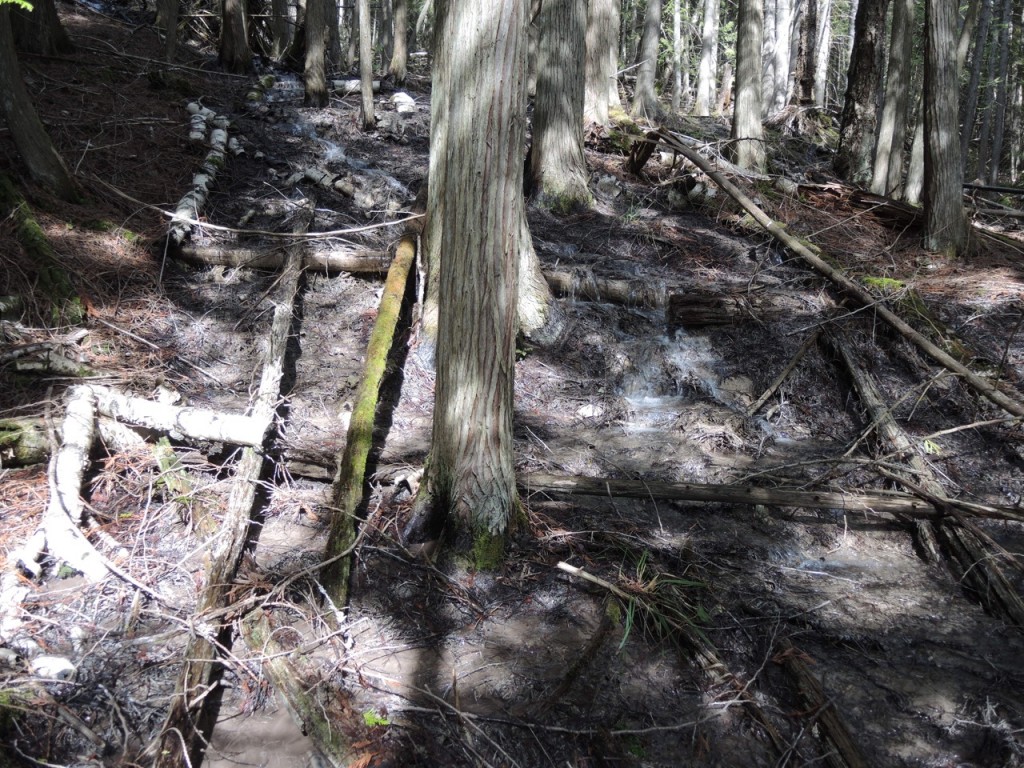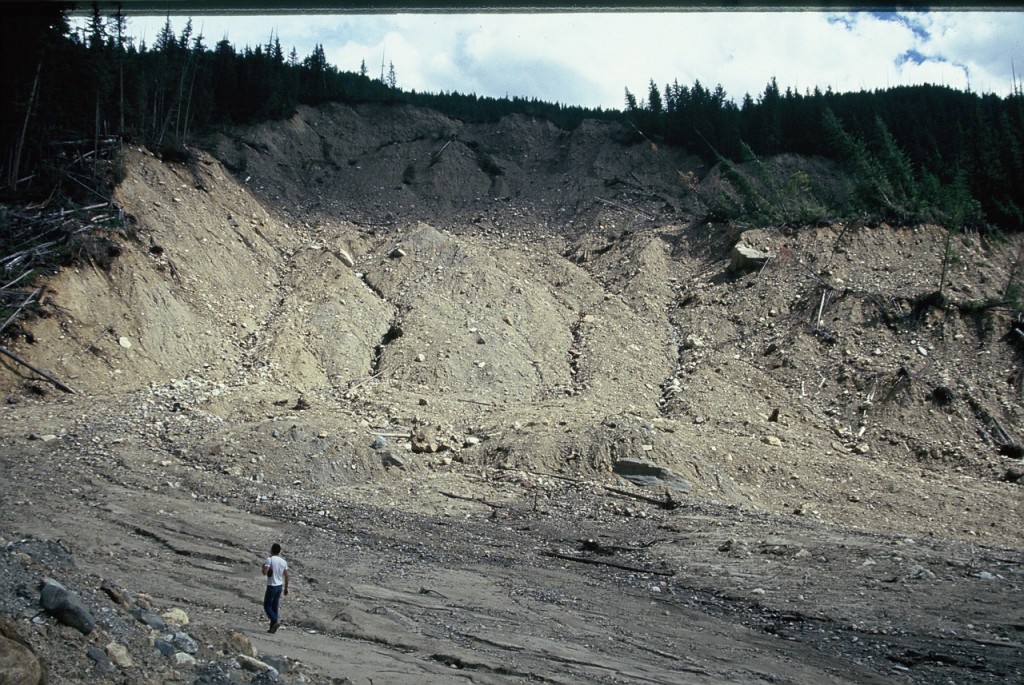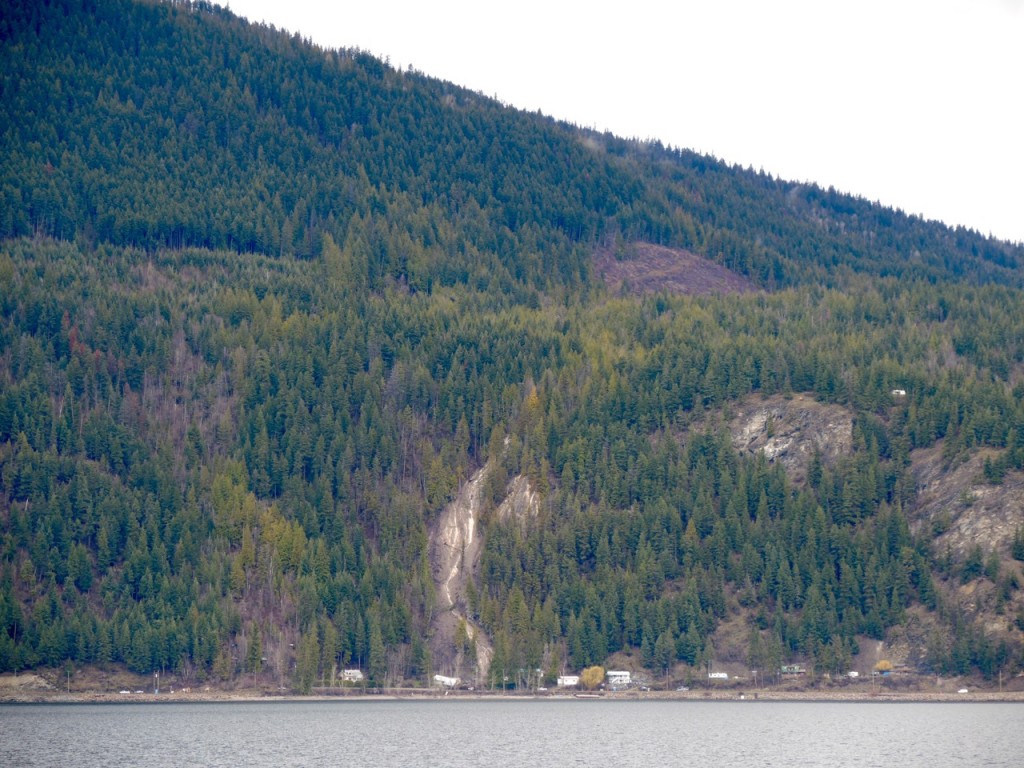
Sunnybrae slide on Randy Creek with cutblock above
While the Shuswap is not as prone to landslides as the coast or the Kootenays, nonetheless this region does experience extreme instability far too often and the problems are likely intensifying. A number of factors are behind the increase, including geography, climate change, and forestry. Some areas are definitely more susceptible, including Sunnybrae where a mudslide recently destroyed two homes and above Mara Lake, where concern about landslides has prompted the regional district to support a logging moratorium.
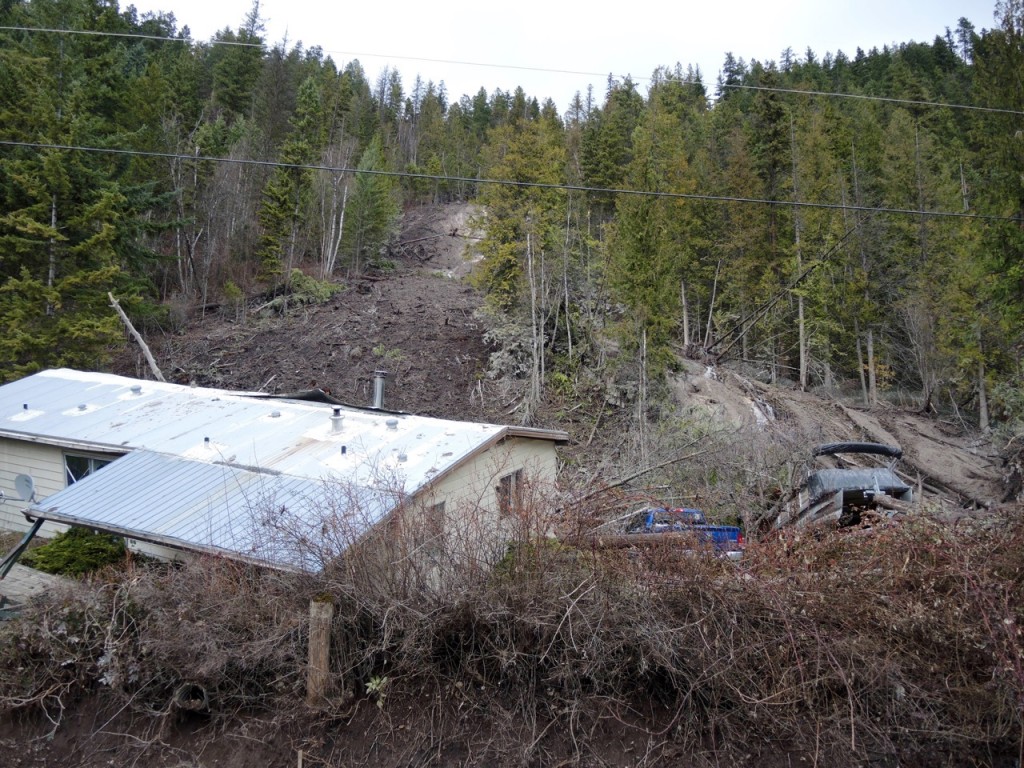
Two homes were destroyed in Sunnybrae
Much of the Shuswap consists of gentle-over-steep terrain, where there is greater potential for forestry practices to cause slope failures that can result in significant damage to the environment as well as homes and property. Typically, the problems occur when a forest is clearcut and roads, skid trails and drainage systems are built on relatively gentle slopes without proper consideration for the impacts on the steeper slopes below. When tree cover is gone, more snow accumulates and water flow is greater especially when heavy rain falls on snow. When combined with poor road and trail drainage management, this water ends of where it does not belong and slides occur.
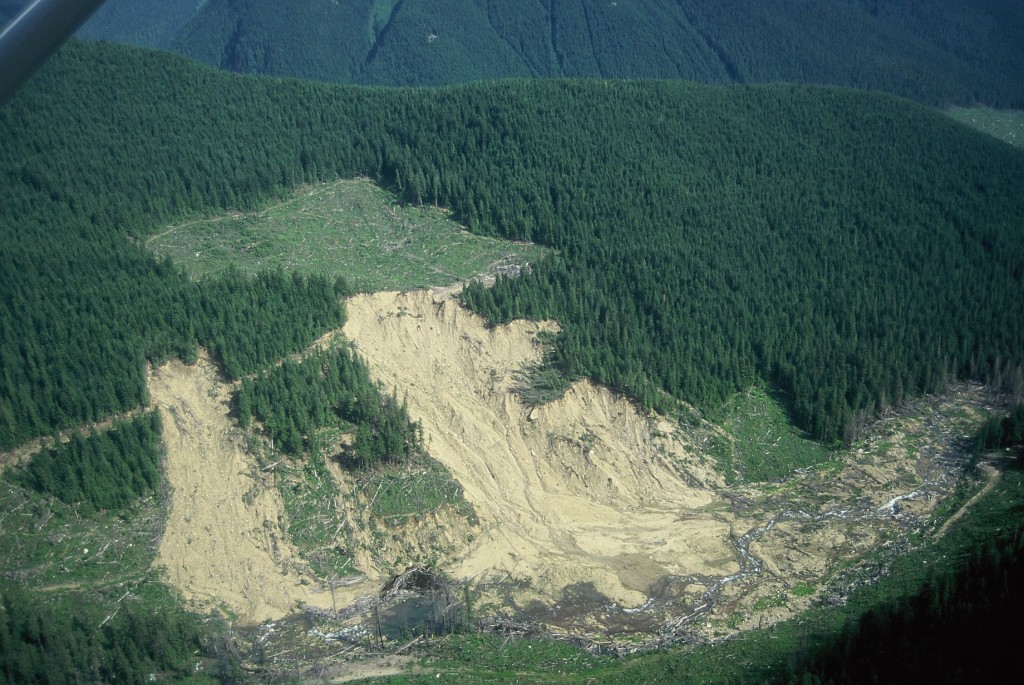
Anstey River landslide, 1990
Since 1990 when there was a massive slide into the Anstey River, I have visited numerous slides throughout the region, all caused by irresponsible logging and road building practices. On May 17, 1995, the snow melted quickly on a south facing clearcut on the top of Angle Mountain after a heavy rainstorm. All of the melting water drained into a culvert on to a saturated hillside that gave way into Hudson Creek causing a massive debris flow that swept through the Anglemont subdivision, then across the road to the lake, causing extensive damage.
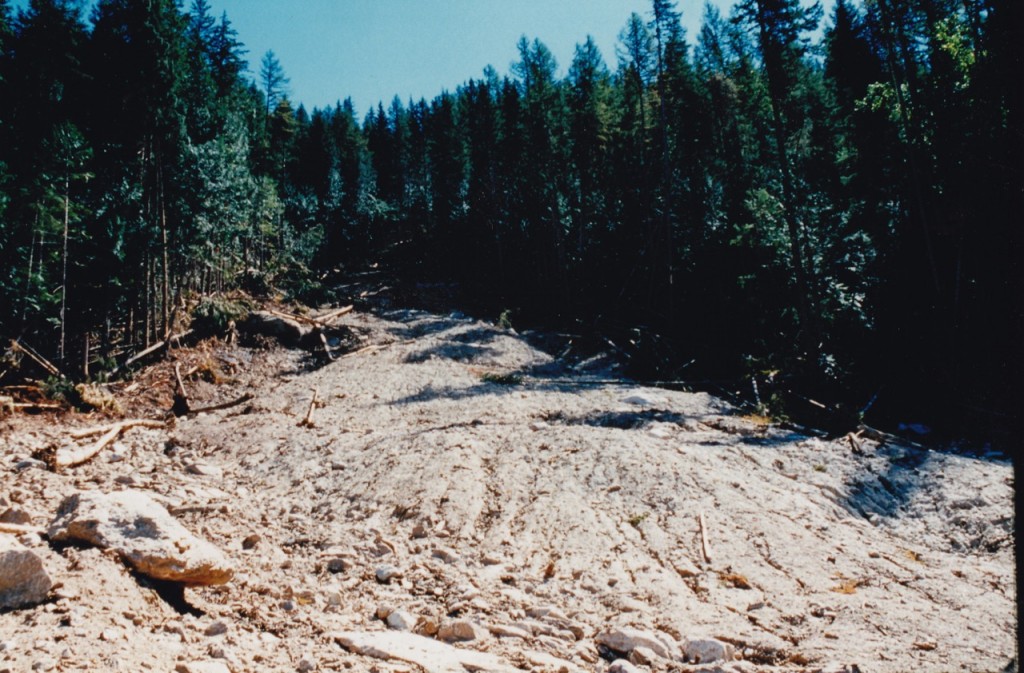
Hummingbrid Creek Landslide, 1997
In July 1997, our environmental organization responded immediately after the massive debris slide devastated Swansea Point. We brought CBC National TV reporter Terry Milewski there to witness the aftermath of the slide as well as to see first hand what was blatantly obvious to the TV crew and CBC TV viewers across Canada, that heavy rain was still flowing down the cutblock skid trails and channeling directly into a culvert to the hillside that gave way and initiated the destructive debris flow.
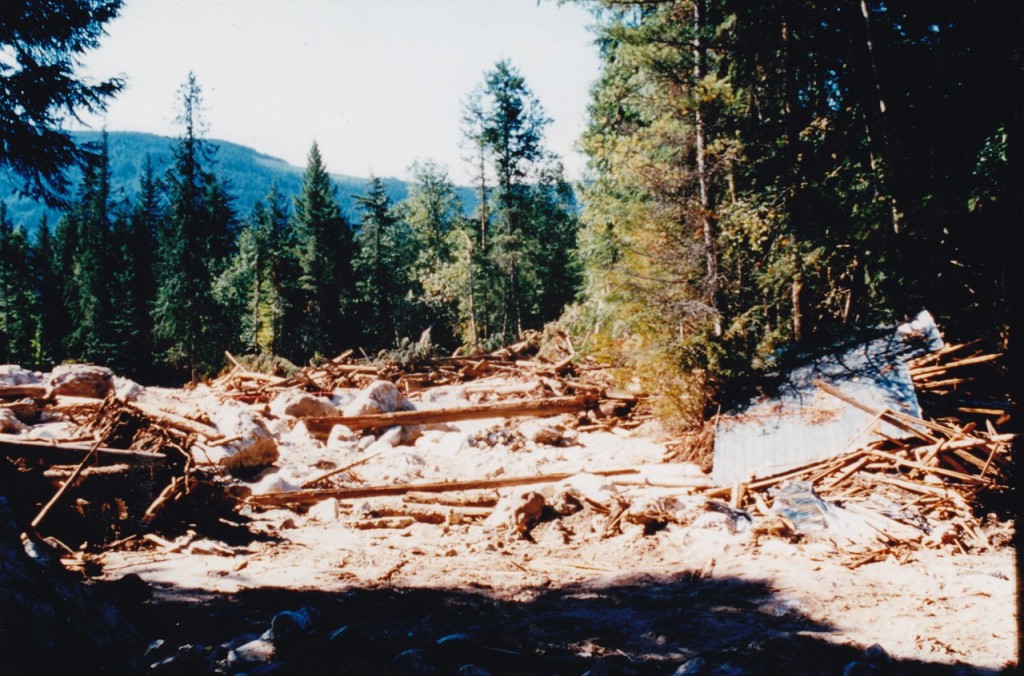
Swansea Point destruction
The immediate response from the government of the day was that the cause of the slide was due to the heavy rain and not to logging. Within a few days, our organization had hired the distinguished U.S. hydrologist, Al Isaacson, who arrived at the site to do an initial study of the catastrophe. His analysis showed how logging and roadbuilding had indeed caused the slide, which was finally confirmed many months later by government experts.
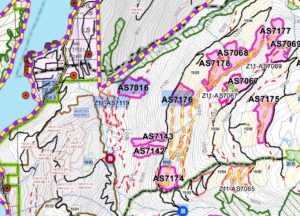 Tolko map showing proposed logging
Tolko map showing proposed logging
Now Tolko wants to log this hillside yet again, despite the obvious risks to the community below. In what is likely the most comprehensive guidebook on the topic, Managing Forested Watersheds for Hydrogeomorphic Risks on Fans, the authors provide a risk analysis matrix. When the consequences are high and the hazard is very high due to steep slopes and soil conditions, then the risk is deemed very high. The authors reach the conclusion that, “the prudent decision may be that development should not occur…” This is exactly the situation with the proposed cutblocks.
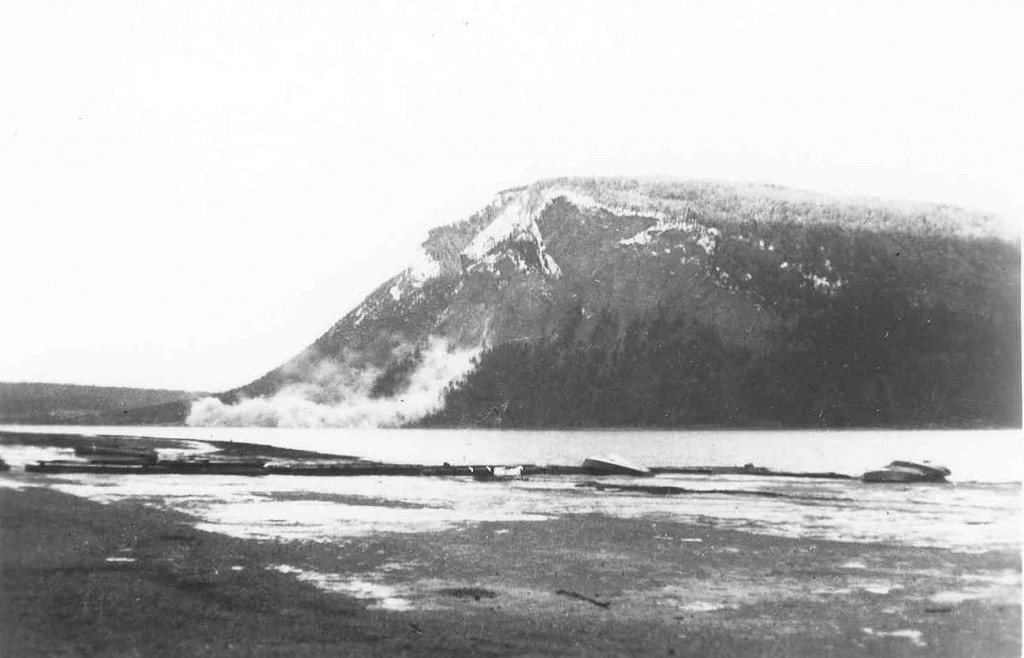
1959 rock slide – photo captured by a lady from her kitchen window
Sunnybrae has seen at least five slides in recent decades, including a massive rockfall in the winter of 1959 that deposited boulders into the lake and the boulder that crashed into a home in 1983, killing two people. These rockfalls are natural as all mountains slowly erode, and rocks often break off when moisture seeps into cracks, which expand when the water freezes. As a result, a large ditch and berm was constructed to protect the Bastion Mobile Village from future rockfalls.
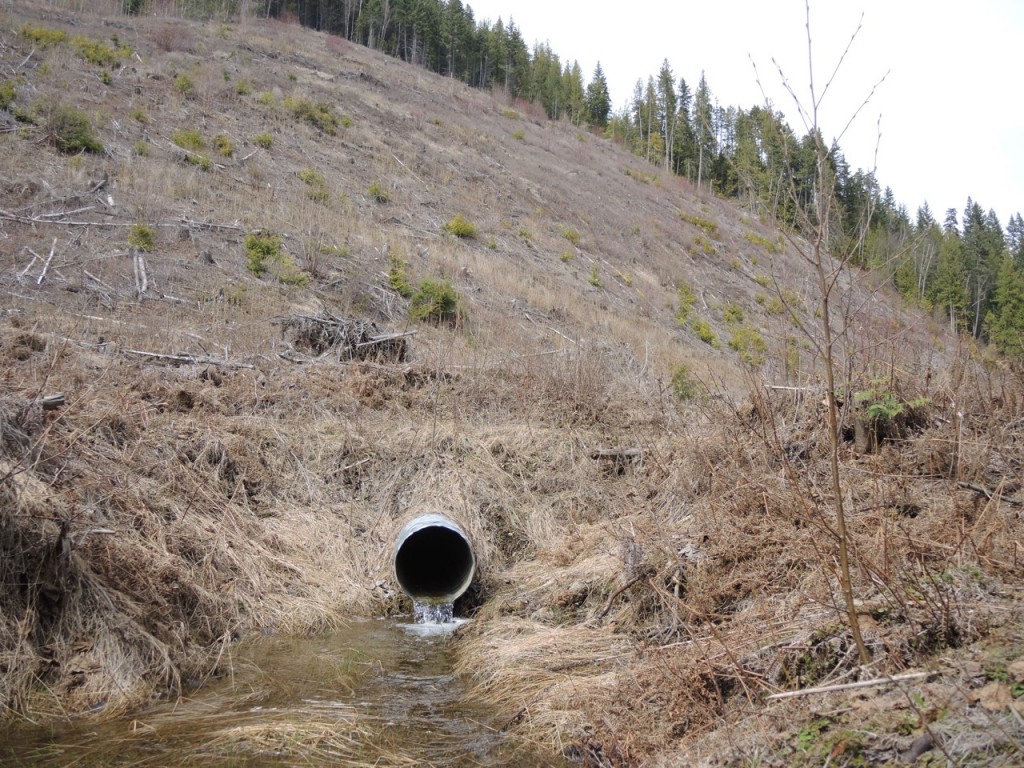
During heavy rain, the water was likely roaring off this cutblock and adjacent roads into Hardy Creek. thus initiating the slide
Directly above the latest Sunnybrae slide is a steep clearcut hillside and related road development. Although the experts are claiming this was a natural event due to saturated soils, after my recent visit I believe there is a good possibility that the logging development contributed by increasing the flow of water to Hardy Creek after heavy rains. Since the property was first homesteaded 80 or more years ago, there have undoubtedly been previous heavy rains without a massive slide until this month after the hillside above was logged a few years ago.
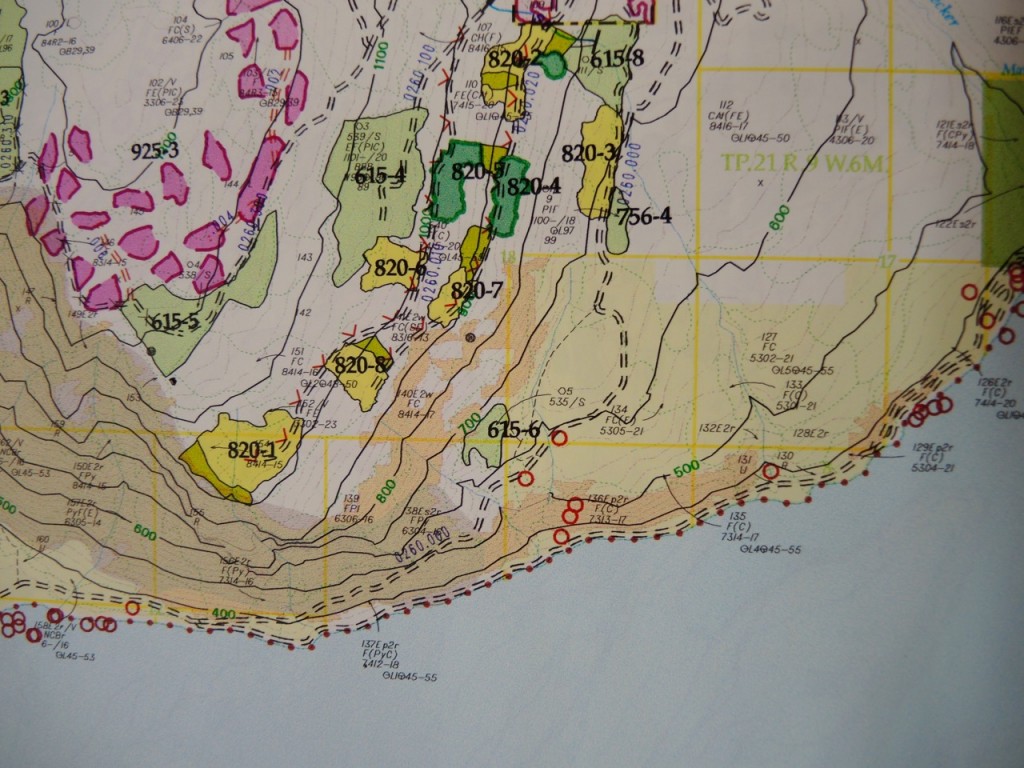
Sunnybrae logging map showing block 615-6 above the slide
As climate change intensifies exponentially, there will be more extreme weather, including intense rainstorms that can cause yet more landslides. Given the higher probability for future slides and this region’s topography and logging history, it would be wise to be better prepared and be more cautious with forest development.
POSTSCRIPT
Ironically, the slide in Sunnybrae occurred just a few hundred metres past the “END SLIDE AREA” sign on the highway. The property owners noticed that the creek had turned dirty about 30 minutes before the slide hit. Above the lake is private property which was owned by Federated Co-op. According to the map, the cutblock is located on crown land. I hiked in there and found substantial water still flowing off the road into the creek.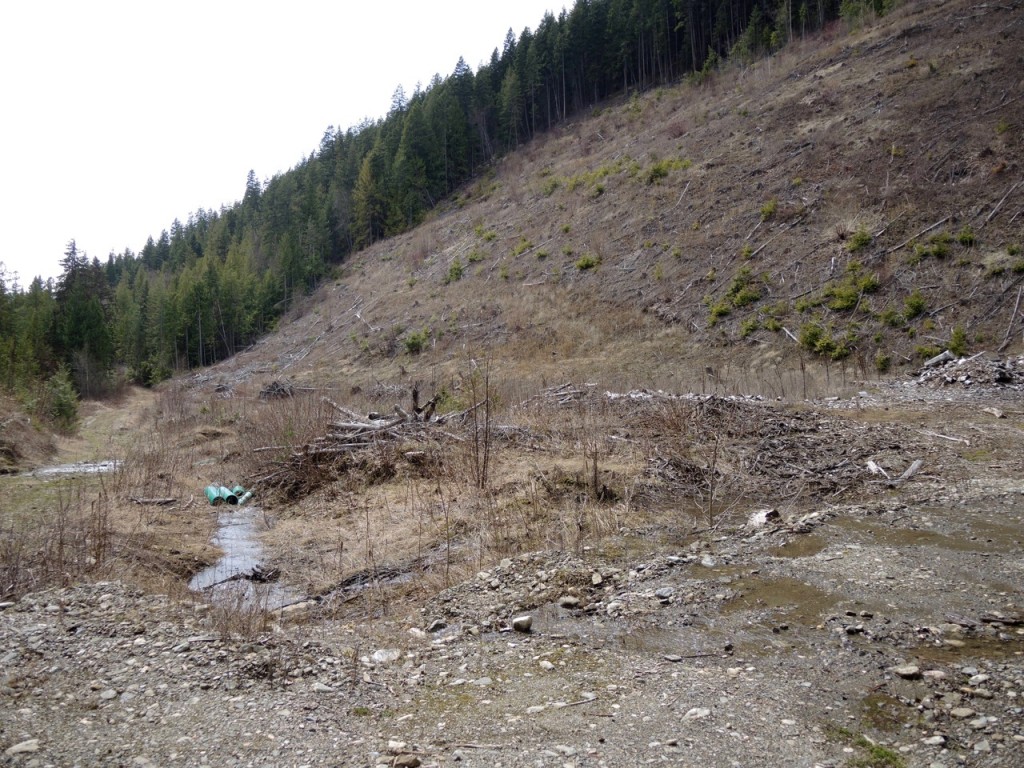
Water still flowing off the logging development into Hardy Creek above Sunnybrae
I hiked from the road to the top of the slide and found evidence of a large flow of water that had deposited mud atop the forest floor. The creek spreads out on the slope above the cliff behind the homes that were destroyed, which is normal according to the landowner. But the mud indicates that the flow of water was greater than normal.
forest floor covered in mud above the slide area
The forest company insists that their logging had nothing to do with the slide and refused to release the date that the block was logged. Interestingly, the block has yet to be re-planted. The geo-tech was hired to assess the risk to the properties and determine if the owners can return to their homes to clean up and re-build. He was not asked to assess the cause of the slide, yet he was quoted saying the slide was natural due to saturated soils. The concern of course is that the logging company (now called Canoe Forest Products) does not want to be held responsible and thus forced to pay the landowner to rebuild. This is what happened in Swansea Point, when the landowners took the forest company to court.
Of course not all slides are caused by logging. Natural slides have been occurring for thousands of years and helped create the fans along most creeks where they enter the lake, such as Swansea Point. But with the amount of logging taking place and with a future forecast of more intense storms and heavy rain events, we can expect to see many more landslides.
The massive 1990 slide into the Anstey River
